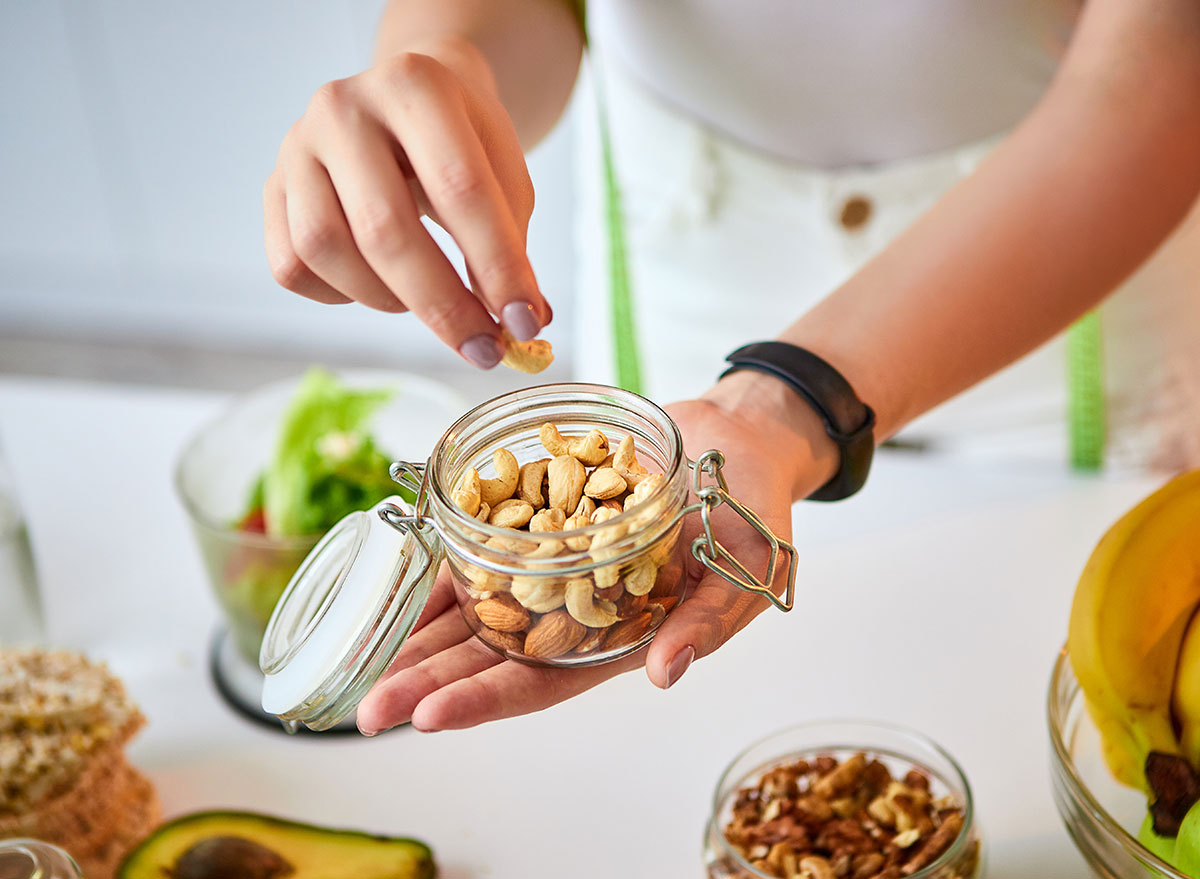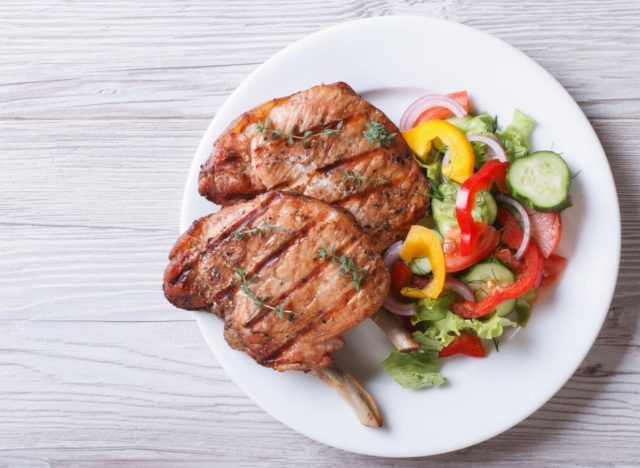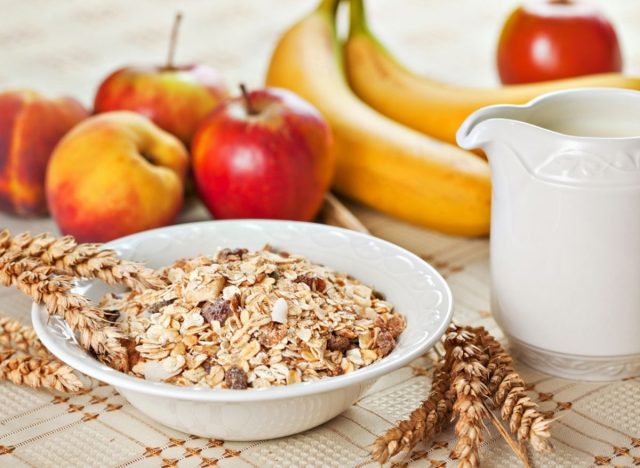5 Abdominal Fat Diet Secrets That Actually Work, Say Dietitians

While there isn’t anything wrong with carrying a little fat on your body, carrying a certain type of abdominal fat known as visceral fat can be dangerous to your health for various reasons.
“First, it is carried at the front of the body where it creates significant stress on the heart and other vital organs. This puts the individual at risk for heart disease and stroke, among other chronic conditions, ” says Trista Best, RD at Balance One Supplements. “Second, if allowed to persist it will form around organs and tissues which makes it difficult to lose, also increasing the risk of chronic disease. Third, visceral belly fat can be a hidden danger for those who otherwise have a normal body weight. A person with a healthy BMI may be carrying a lot of belly fat while other areas of the body are relatively thin. This can create a false sense of reassurance that they do not need to worry over health or weight loss.”
Luckily, experts have found a number of ways to target abdominal fat over the years. According to the Harvard Medical School, this type of fat can be combated with at least 30 minutes of regular exercise per day and by limiting excess sugar, fat, and other unwholesome elements in your diet. While these methods can start you off on the right track, we asked a handful of experts about other proven methods that can trim down abdominal fat.
When you want to make your diet work for you, follow these tips and pair them with the 6 Best Foods That Melt Abdominal Fat for maximum results.
Don’t skip meals.

Even if it seems counterintuitive, make sure you stick to a regular eating schedule.
“I understand the idea that reducing fat or reducing certain foods in a diet can help reduce fat,” says Blanca Garcia, RDN and nutrition specialist of Health Canal. “In reality, it’s not so much the food only that affects the abdominal fat, but also eating habits. Skipping meals can actually contribute to midsection fat.”
“A person that skips a meal tells the body it’s in starvation mode and as soon as the food is delivered to the body it will store fat as a way to safeguard enough energy stores for the ‘starvation mode’ it believes it’s in. The secondary reason this habit can affect midsection fat is a person’s feeling of hunger can cause that person to eat faster and possibly overeat. The technique is to choose a time to eat every 3 to 4 hours whether a snack or meal and stay consistent. This communicates to the body there is food and also places hunger cues in order.”
Eat more protein.

When you plan your meals, make sure protein plays a key role if you need to reduce abdominal fat.
“Protein is essential for building and maintaining muscle mass,” says Morgyn Clair, MS, RDN at Fit Healthy Momma. “As we lose, our metabolism changes and nutrition needs are different. Many people losing weight do not necessarily get enough protein in their diet, which can lead to muscle loss along with fat loss. Muscle naturally burns more calories throughout the day; meaning that more muscle mass equals faster metabolism overall.”
Make sure that your choice of protein works for you. If you need some inspiration, make sure to include The 30 Best Proteins for Every Goal into your diet for maximum results.
Eat fewer calories at night.

Knowing when to have your heaviest meals can make a world of difference when you want to shrink your waistline.
“Studies show time and time again that reducing caloric intake before sleeping can lead to sustained weight loss,” Clair continues. “Have more balanced meals throughout the day and skip heavy night time snacks to help the waistline.”
Not all foods are equal when you eat them later at night. Check your diet against the 40 Best and Worst Foods to Eat Before Sleep to see if your late-night snacks help or harm your fat-loss goals.
Track your calories to avoid overeating.

By monitoring how many calories you eat a day, you can avoid overeating and keep your abdominal fat levels to a minimum.
“In order to lose abdominal fat you must learn to be at a caloric deficit,” says Jesse Feder, RD and personal trainer with StrengthWarehouse USA.
“This means you must be burning more calories than you are taking in. For example, if you eat 2,000 calories a day, and burn a total of 2,000 calories in a day, then nothing will happen to your weight. If you start to eat 1,500 to 1,800 calories a day and burn 2,000, then you are at a caloric deficit. Your body will start to burn body fat to make up for that deficit. This will cause you to lose abdominal fat over time.”
Embrace intermittent fasting.

If you don’t feel like calorie counting, sticking to a simple intermittent fasting plan can also do wonders for your waistline.
“This can be a method used to achieve a caloric deficit and help you lose abdominal fat,” Feder continues. “Instead of eating from the time you wake up to the time you go to bed, you limit your eating to a certain time window. The most popular method is the 16/8 method. This means you fast for 16 hours and you have a window of 8 hours to eat your 2 to 3 meals. This can help you reduce the overall calories you eat in a day. Over time, this will reduce abdominal fat.”
Science has linked this particular diet plan to some serious results and research has found that Intermittent Fasting Can Lead to “Significant” Weight Loss.









